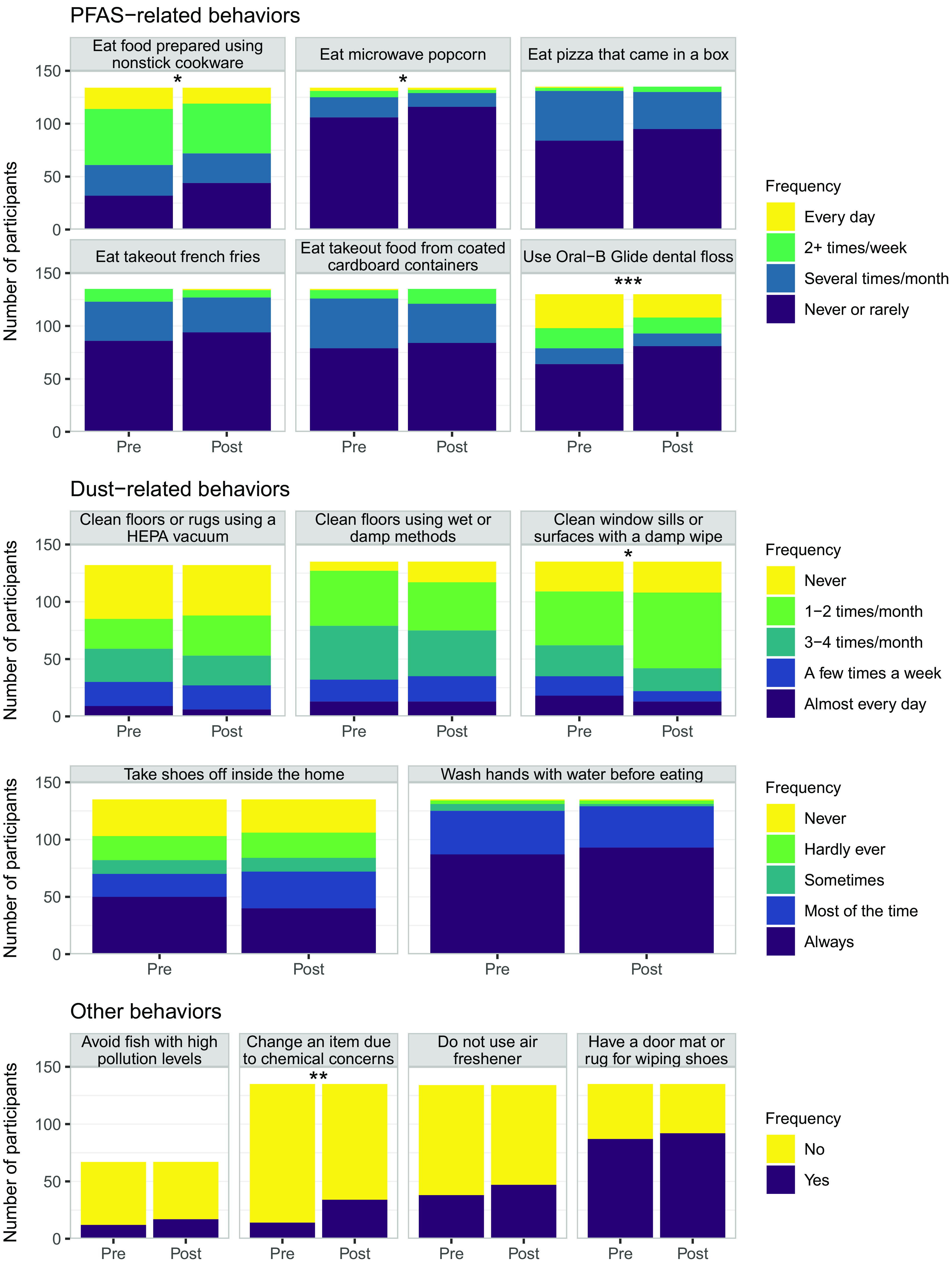Figure 1.

Frequency of performing exposure-related environmental health behaviors, before and after receiving report-back. Frequency of behavior was assessed for the previous month, except for taking shoes off and handwashing, which were assessed for the previous week. A total of 11 out of 135 participants had missing data for one behavior: using Oral-B Glide floss (), using a vacuum with a high-efficiency particulate air (HEPA) filter (), eating food prepared with nonstick cookware (), eating microwave popcorn (), and not using air freshener (). The question about avoiding fish with high pollution levels was asked only of participants who first indicated that they consumed fish or seafood (). All scales are ordered such that the darkest part of the scale is the protective environmental health action; in some cases, the protective action is not performing an exposure-related behavior (e.g., not eating microwave popcorn). Symbols indicate -values from Wilcoxon-Pratt signed-rank tests (PFAS-related and dust-related behaviors) or McNemar’s test (other behaviors): *, **, ***. Summary data are available in Table S4.
